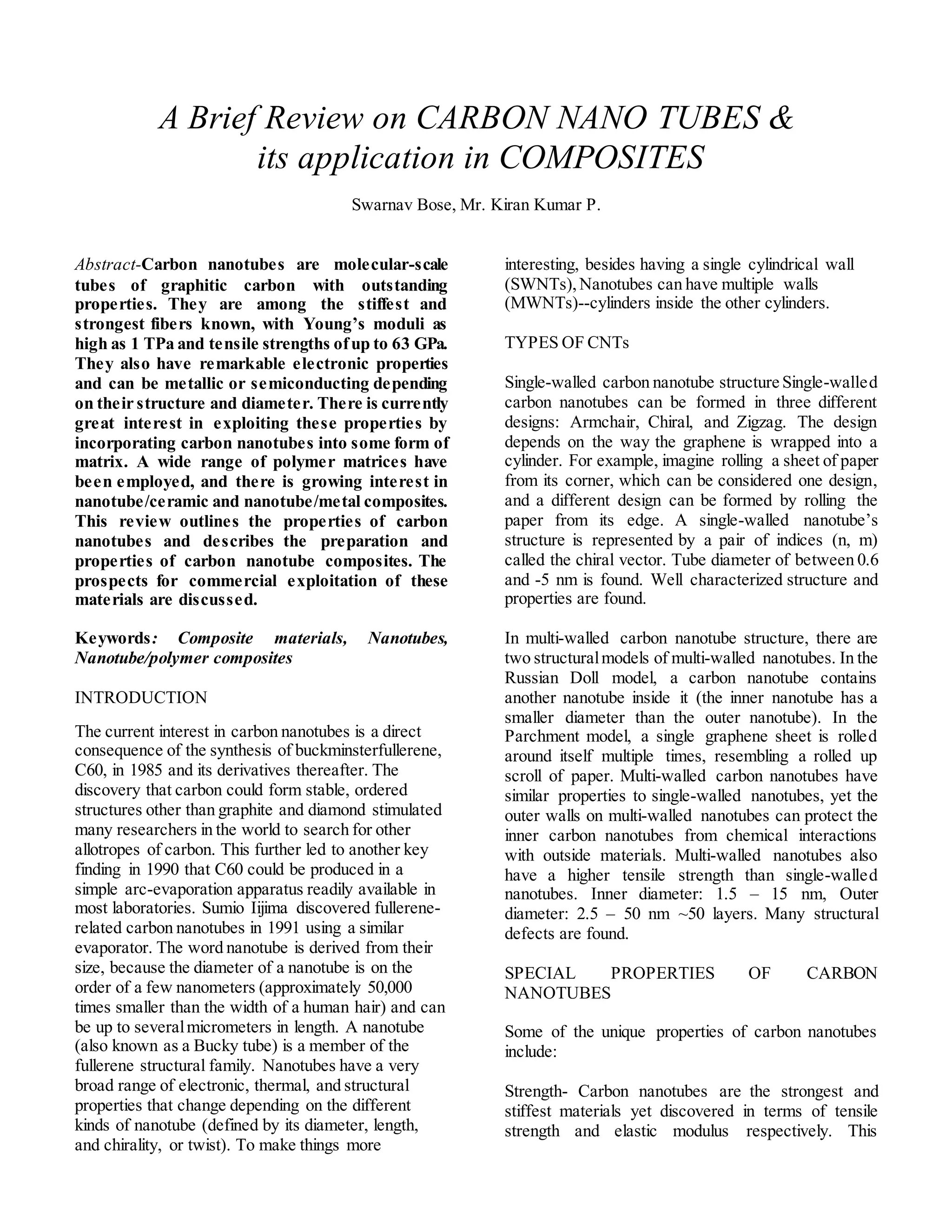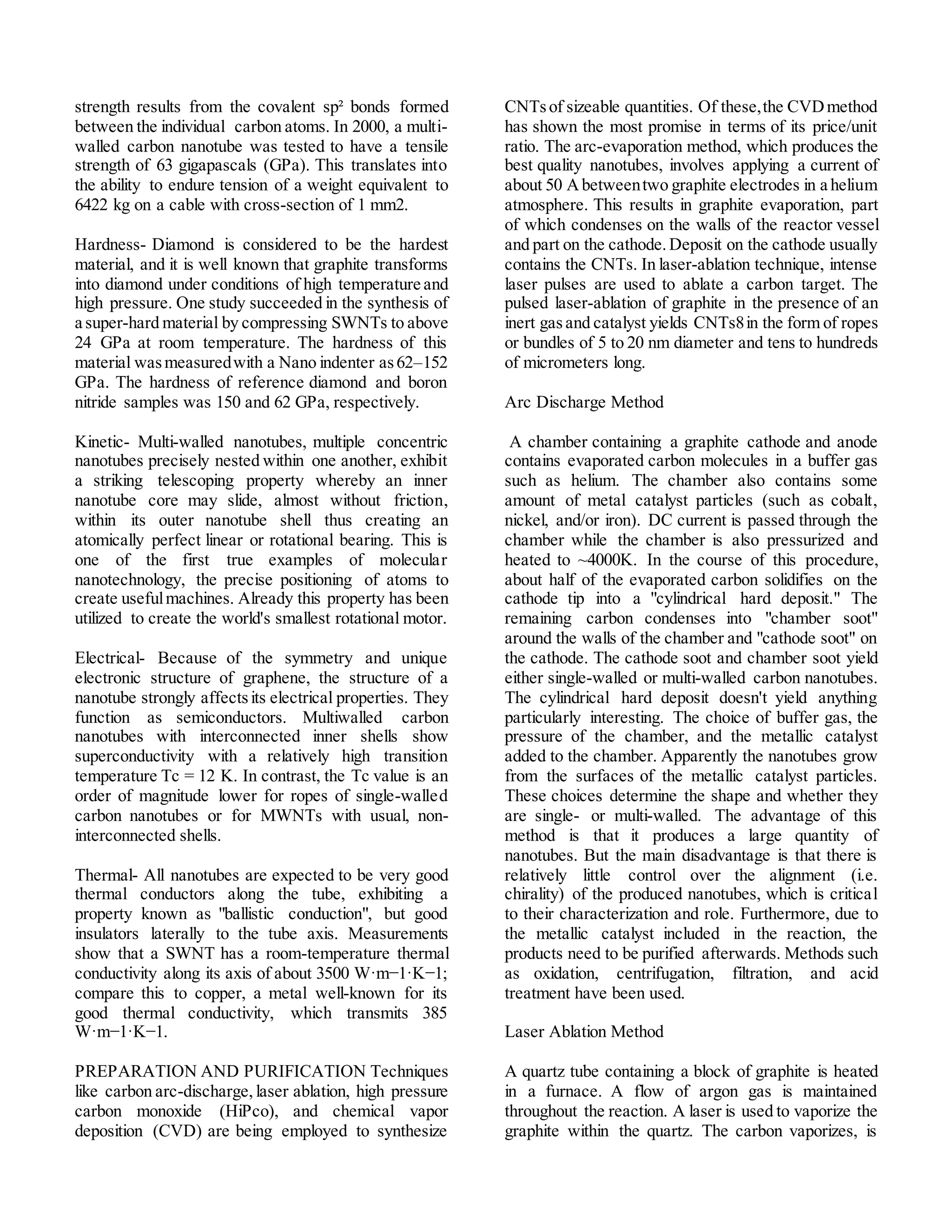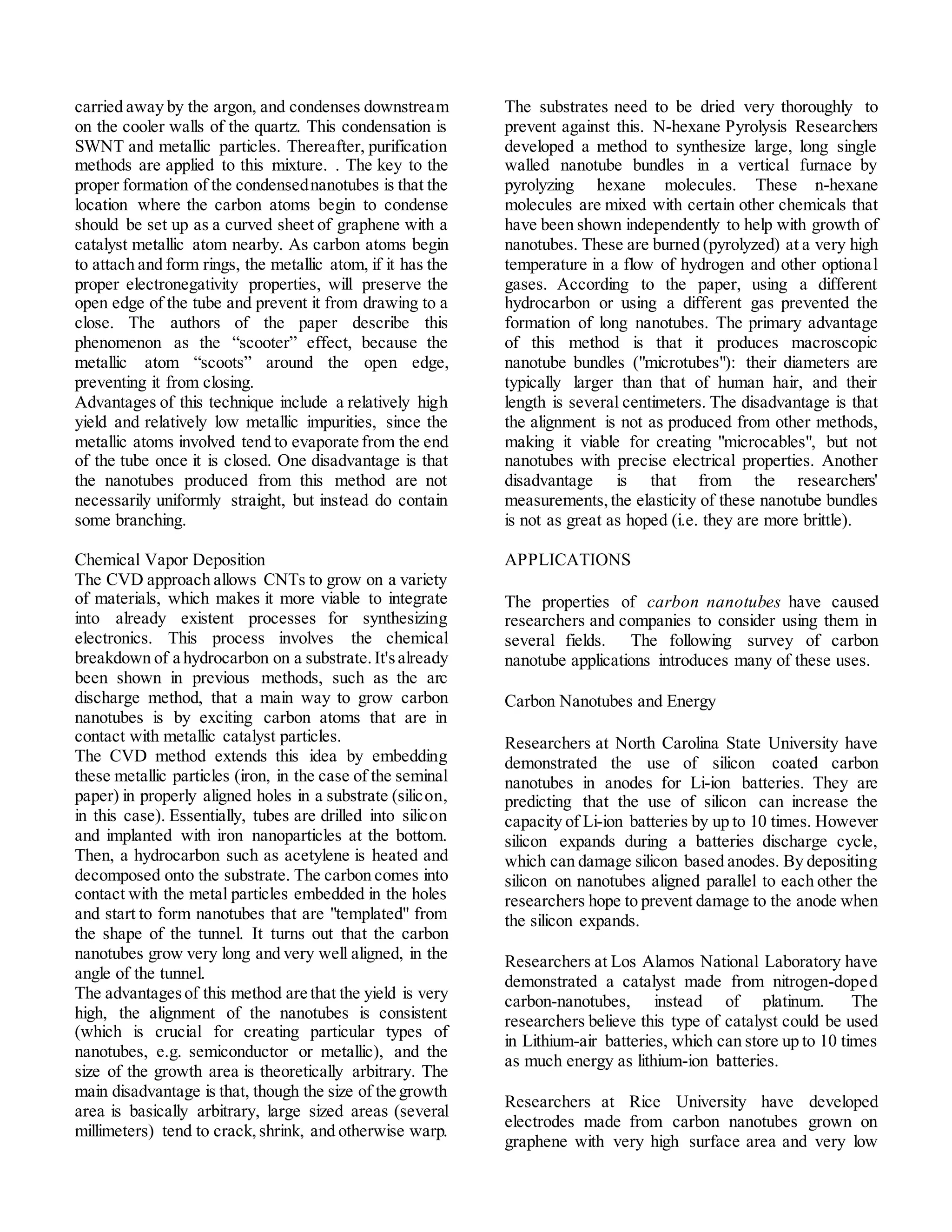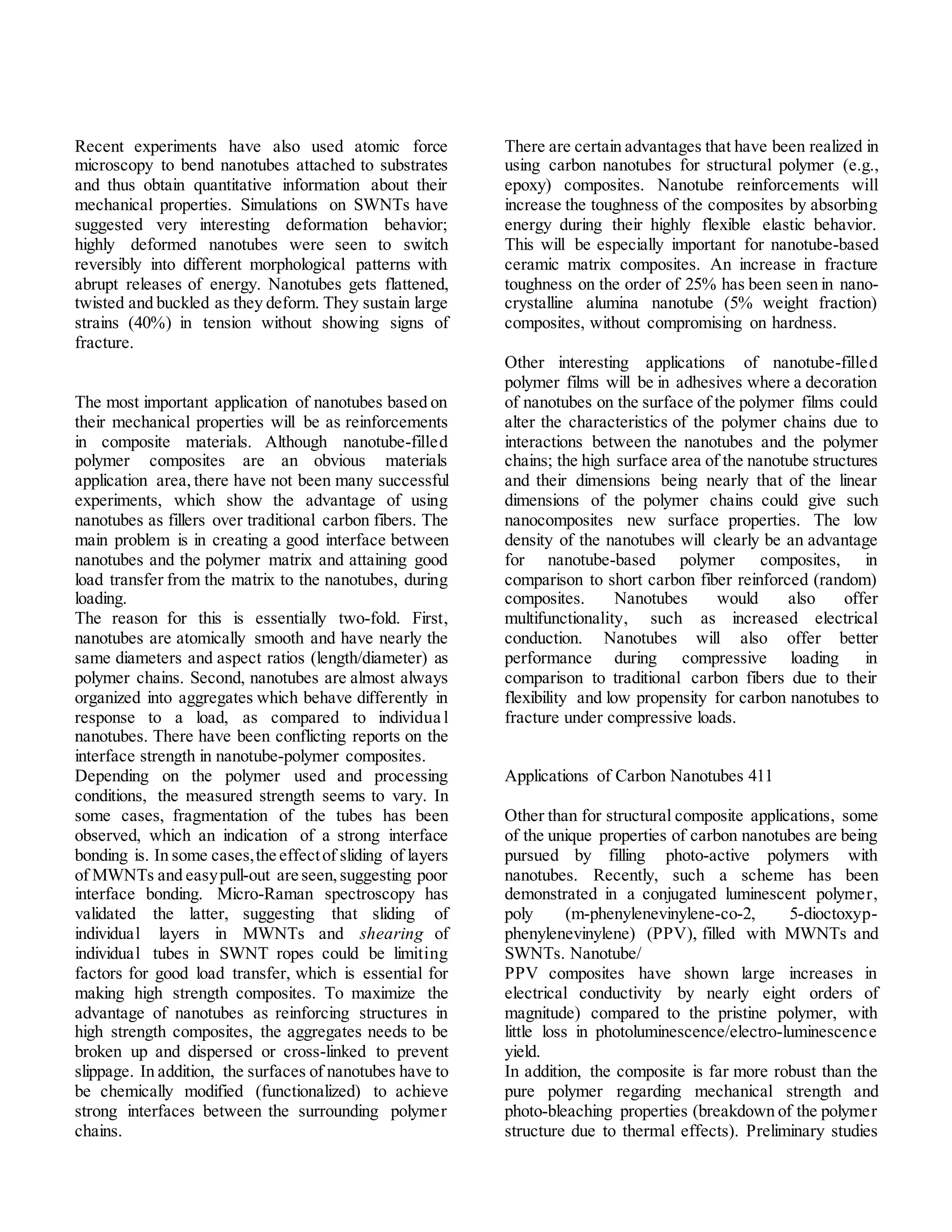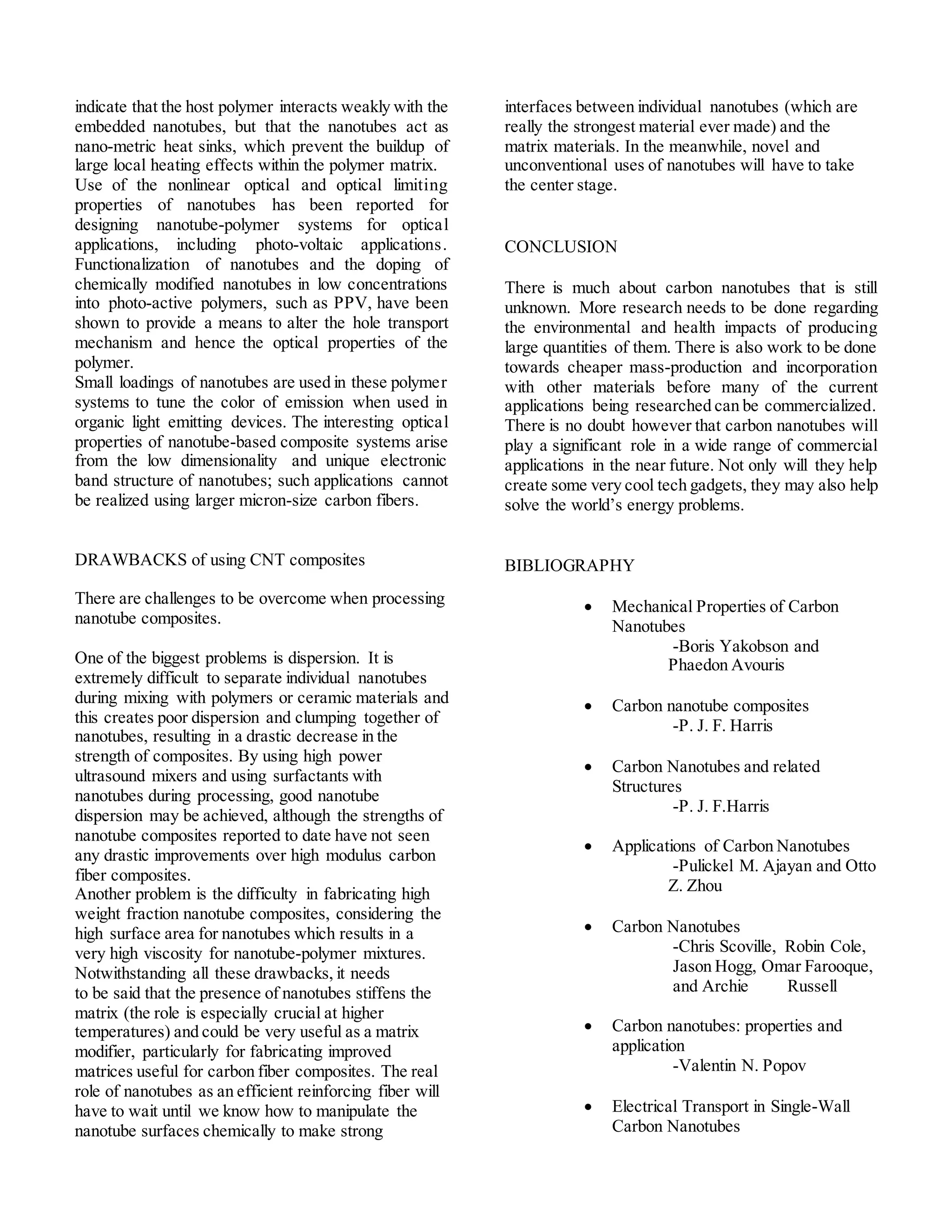This document provides an overview of carbon nanotubes, including their unique properties, production methods, and applications. Carbon nanotubes are extraordinarily strong and stiff, and can be metallic or semiconducting depending on their structure. There are several methods for producing carbon nanotubes, including arc discharge, laser ablation, and chemical vapor deposition. Carbon nanotubes show promise for applications in energy storage, healthcare, and environmental remediation due to their mechanical, electrical, and thermal properties.
